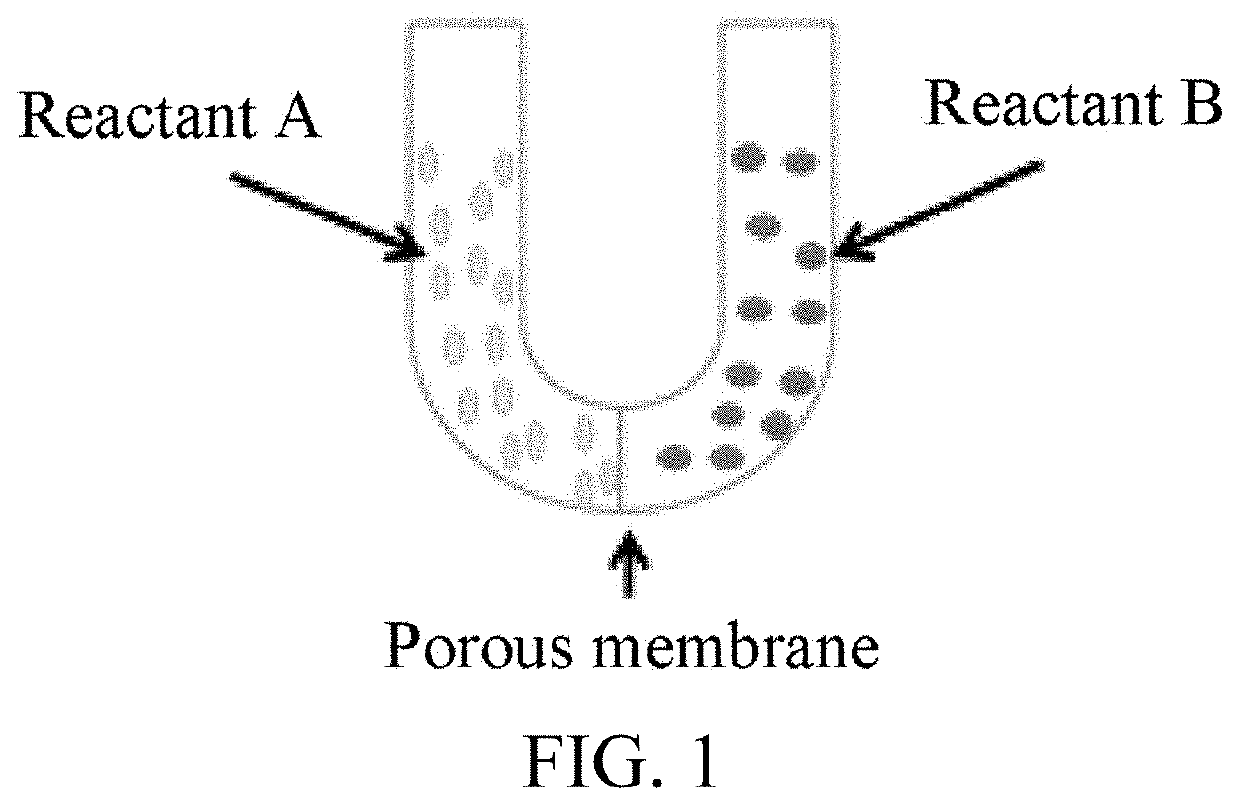Nanocomposite membrane for heavy metal rejection and preparation method thereof
- Summary
- Abstract
- Description
- Claims
- Application Information
AI Technical Summary
Benefits of technology
Problems solved by technology
Method used
Image
Examples
example 1
[0044]The nanocomposite membrane in this example was prepared by the steps as follows.
[0045]1) Preparation of a two-dimensional sheet material dispersion: Commercially available single-layer molybdenum diselenide was purchased and prepared by chemical vapor deposition into a two-dimensional sheet material with a diameter of 20-50 μm and a thickness of 0.6-0.8 nm. The two-dimensional sheet material was dispersed in deionized water and ultrasonicated for 5 h to prepare the dispersion having a concentration of 0.02 g / L.
[0046]2) Preparation of a molybdenum diselenide porous membrane: A hydrophilic PVDF membrane (pore size: 0.22 μm) was fixed in a suction flask, and the effective area of the hydrophilic PVDF membrane was 2.01 cm2. 10 mL of the dispersion prepared in step 1) was taken and poured into a glass tube over the membrane of the suction flask. A vacuum circulating water pump was used for suction filtration for 0.01 h at a pressure of 1 bar. After water in the dispersion was compl...
example 2
[0055]The nanocomposite membrane in this example was prepared by the steps as follows.
[0056]Commercially available single-layer tungsten disulfide was purchased and prepared by chemical vapor deposition into a two-dimensional sheet material with a diameter of 20-30 μm and a thickness of 0.6-0.8 nm. The two-dimensional sheet material was dispersed in deionized water and ultrasonicated for 10 h to prepare the dispersion having a concentration of 200 mg / L.
[0057]A hydrophilic PVDF membrane (pore size: 0.22 μm) was fixed in a suction flask, and the effective area of the hydrophilic PVDF membrane was 2.01 cm2. 10 mL of the above dispersion was taken and poured into a glass tube over the membrane of the suction flask. A vacuum circulating water pump was used for suction filtration for 2 h at a pressure of 0.05 bar. After water in the dispersion was completely extracted from the bottom of the membrane, the membrane (together with the PVDF membrane) was taken out, and soaked and washed in de...
example 3
[0060]The nanocomposite membrane in this example was prepared by the steps as follows.
[0061]Graphene oxide was prepared by the Hummers method, and the preparation method refers to a patent with the patent application No. 201810242893.6. The graphene oxide has a diameter of 0.2-10 μm and a thickness of 1.2-1.8 nm. The graphene oxide was dispersed in deionized water and ultrasonicated for 5 h to prepare the dispersion having a concentration of 10 mg / L.
[0062]A hydrophilic PVDF membrane (pore size: 0.22 μm) was fixed in a suction flask, and the effective area of the hydrophilic PVDF membrane was 2.01 cm2. 50 ml of the above dispersion was taken and poured into a glass tube over the membrane of the suction flask. A vacuum circulating water pump was used for suction filtration for 15 h at a pressure of 0.01 bar. After water in the dispersion was completely extracted from the bottom of the membrane, the membrane (together with the PVDF membrane) was taken out, and soaked and washed in deio...
PUM
| Property | Measurement | Unit |
|---|---|---|
| Time | aaaaa | aaaaa |
| Time | aaaaa | aaaaa |
| Time | aaaaa | aaaaa |
Abstract
Description
Claims
Application Information
 Login to View More
Login to View More - R&D
- Intellectual Property
- Life Sciences
- Materials
- Tech Scout
- Unparalleled Data Quality
- Higher Quality Content
- 60% Fewer Hallucinations
Browse by: Latest US Patents, China's latest patents, Technical Efficacy Thesaurus, Application Domain, Technology Topic, Popular Technical Reports.
© 2025 PatSnap. All rights reserved.Legal|Privacy policy|Modern Slavery Act Transparency Statement|Sitemap|About US| Contact US: help@patsnap.com



